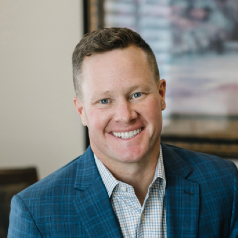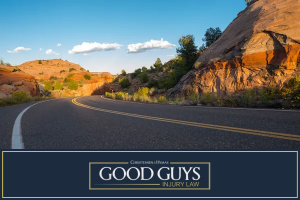
Utah’s roads and intersections can be as beautiful as they are dangerous. The state’s diverse landscapes present unique challenges for drivers. From Salt Lake City’s urban sprawl to the desert’s remote highways, each road has its risks. Understanding these dangers is vital to staying safe on Utah’s roads. At Good Guys Injury Law, we know that fatal accidents occur on dangerous Utah roads more often than they should. We encourage everyone to stay under the speed limit, drive carefully on the twisting route of the Mountain View Corridor, and obey the advice of the Utah Highway Patrol.
The reasons behind the danger on Utah’s roads are varied. Some factors are natural, like the weather and the state’s mountainous terrain. Others are artificial, such as road design and traffic congestion. Each factor contributes to making certain roads and intersections in Utah particularly hazardous.
Learn more about dangerous crossings and roads near West Valley City, and call us to schedule a free consultation after a car or truck accident.
Table of Contents
Factors Contributing To Dangerous Roads in Utah
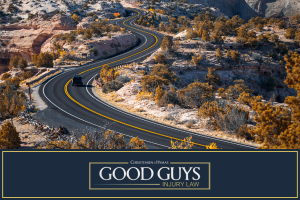
Several factors contribute to making some roads in Utah more dangerous than others. According to the Utah Department of Transportation, these include geographical challenges, traffic volume, and street design. These factors majorly affect the number of accidents, injuries, and deaths on Utah roads.
Geographical and Topographical Challenges
- Mountainous Terrain. Utah’s mountainous terrain presents unique challenges for drivers. Steep inclines and declines can be difficult to navigate, especially for large vehicles like trucks. These roads often have sharp curves and limited visibility, increasing the risk of accidents.
- Weather Conditions. Utah’s weather, particularly in winter, can make roads treacherous. Snow and ice can lead to slippery conditions and poor visibility. Mountain passes and higher elevations are especially prone to hazardous weather conditions, making driving in these areas riskier.
Traffic Volume and Congestion
- Urban vs. Rural Areas. The risk on Utah roads varies significantly between urban and rural areas. With their high traffic volume and complex road networks, urban areas tend to have more accidents. In contrast, rural areas have fewer cars, but the accidents can be more severe due to higher speeds and longer response times for emergency services.
- Peak Traffic Times. During peak traffic times, the risk of accidents increases. Rush hour traffic in cities like Salt Lake City can lead to congestion and impatient driving. This often results in more frequent collisions, including rear-end crashes and side-impact accidents at intersections. The busiest route is often the most dangerous.
Road Design and Infrastructure
- Curves, Gradients, and Elevation Changes. Roads in Utah that feature sharp curves, steep gradients, and significant elevation changes can be hazardous. These features challenge drivers’ control and vehicles’ handling abilities, increasing the likelihood of accidents.
- Insufficient Signage and Lighting. Some Utah roads need more signage and lighting, making it difficult for drivers to navigate safely. Poorly lit roads or intersections and missing or unclear signs can lead to confusion and accidents.
- Poor Road Maintenance. Roads that need to be well-maintained can pose significant risks to drivers. Potholes, uneven road surfaces, and faded lane markings can contribute to accidents. Regular maintenance is crucial for ensuring road safety.
Most Dangerous Roads in Utah
Utah has several roads known for their high accident rates. These roads pose a greater risk due to heavy traffic, challenging terrain, and poor road conditions. Awareness of these dangerous roads can help drivers be more cautious and avoid accidents.
Interstate Highways
- I-15: Interstate 15 is one of Utah’s busiest and most dangerous highways. Stretching from the Idaho border to Arizona, it sees a high volume of local and interstate traffic. Accidents on I-15 are common, especially in areas with heavy congestion and construction zones.
- I-80: Interstate 80, running east-west across Utah, is notorious for its long stretches of remote road. This highway experiences severe weather conditions, particularly in the winter, making it a hotspot for accidents. The high-speed traffic and challenging weather make I-80 a risky route for drivers.
State Routes and Highways
- Sr-6: State Route 6 is known for its high accident rate. This highway, linking Spanish Fork to Green River, winds through mountainous terrain, contributing to its danger. The combination of heavy truck traffic and sharp curves often leads to severe accidents on SR-6.
- Sr-191: State Route 191, which runs north to south in eastern Utah, is known to be hazardous. This route is frequented by tourists and truckers, leading to a diverse traffic mix. The rural nature of SR-191 means that accidents can be more severe, with longer emergency response times.
Local Roads With High Accident Rates
Some local roads in Utah also have high accident rates. These roads often pass through residential areas or busy commercial districts. Factors like frequent stop-and-go traffic, pedestrian crossings, and limited visibility contribute to accidents on these roads.
Urban areas in Utah, such as Salt Lake City and Provo, have several local roads where accidents are common. These roads require extra caution, especially during peak traffic hours. Drivers should know their surroundings and watch for pedestrians, bicyclists, and other vehicles.
Most Dangerous Intersections in Utah
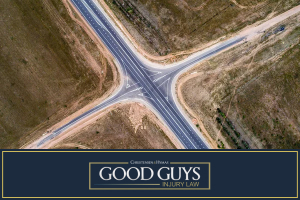
Intersections are often hotspots for vehicle accidents in Utah. The combination of crossing traffic, turning vehicles, and traffic signals creates situations ripe for collisions. Some intersections are more dangerous than others, with a higher frequency of car accidents.
Urban Intersections
- Downtown Areas With High Traffic: Utah cities have some of the most dangerous intersections. High traffic volumes and a dense network of streets increase the risk of accidents. Drivers should be vigilant on Main Street in Salt Lake City, especially during rush hours.
- Notorious Intersections With a History of Accidents: Certain intersections in Utah are known for their high accident rates. A few examples to note include:
- Redwood Road and 4100 South;
- State Street and 4500 South; and
- 7800 South and 700 East.
These include areas with complex traffic patterns or poor visibility. Being aware of these notorious intersections can help drivers navigate them more safely.
Rural Intersections
Rural intersections, particularly those on major highways, present their dangers. These intersections often have higher speed limits and less traffic control, increasing the risk of severe accidents. Drivers in rural areas should approach intersections cautiously, especially with limited visibility.
In less populated areas, intersections may need to be well-lit or have adequate signage. This can lead to drivers misjudging distances or failing to notice stop signs. It’s essential to be extra vigilant when driving in rural Utah, especially at night or in poor weather conditions.
Factors Contributing to Intersection Dangers
- Poor Visibility: Many intersections in Utah suffer from poor visibility, making it difficult for drivers to see other vehicles or pedestrians. This can be due to obstructive buildings, parked cars, or foliage. Drivers should approach these intersections cautiously and be prepared to stop or yield as needed.
- Lack of Traffic Control Devices: Some intersections need more traffic control devices, such as stop lights or clear signage. This can lead to confusion among drivers about who has the right of way. In such situations, it’s crucial to drive defensively and be aware of the actions of other drivers.
No-Fault Insurance Claims and PIP
Utah is a no-fault insurance state. This means that your insurance policy pays for your medical expenses after a car accident, regardless of who caused the accident. This system is designed to speed up the payment of medical costs and lost wages without requiring a lengthy fault determination process.
Under Utah law, drivers must carry personal injury protection (PIP) and car insurance. PIP takes care of medical expenses and a percentage of lost wages. Typically, it does not matter who is at fault. Understanding how PIP works and what it covers is essential for anyone driving in Utah.
How Good Guys Injury Law Can Help After a Car Accident in Utah
- Legal Expertise: Our Good Guys Injury Law team has extensive experience in Utah car accident law. We understand the complexities of no-fault insurance and how to navigate the claims process effectively.
- Personalized Attention: We provide personalized attention to each case, addressing your needs and desires. Our approach is to work closely with you throughout the legal process.
- Maximizing Your Compensation: We aim to maximize the compensation you recover for your suffering and financial losses. We diligently pursue all avenues of compensation available to you under Utah law.
- Negotiation with Insurance Companies: We have the experience, connections, and skills needed to negotiate with insurance companies on your behalf. Our law office strives to ensure that you receive a fair settlement.
- Representation in Court: We are prepared to represent you if necessary. We build a strong case on your behalf to help you obtain justice.
Schedule a Free Consultation With Our Utah Car Accident Lawyers at Good Guys Injury Law Today
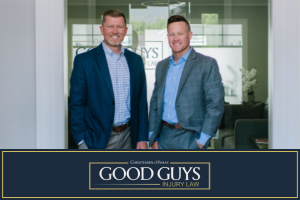
If you’ve been in a car accident in Utah, don’t wait to seek legal help. Contact Good Guys Injury Law for a free consultation. Our experienced Utah car accident lawyers are ready to assist you. We’ll review your case, explain your options, and guide you through the legal process.
At Good Guys Injury Law, we put our clients first every step of the way. Schedule your free consultation today, and let us be the good guys on your side.
